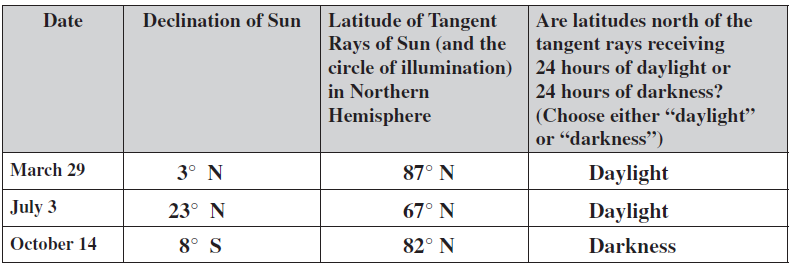Determine the latitude of the tangent rays of the Sun in the Northern Hemisphere on the following days of the year, then indicate if latitudes north of the tangent rays in the Northern Hemisphere are receiving 24 hours of daylight or 24 hours of darkness. Remember, the tangent rays and circle of illumination will be the same number of degrees of latitude away from the North Pole as the declination of the Sun is from the equator. If the declination of the Sun is north of the equator, it is the high-Sun season (“summer”) in the Northern Hemisphere; if the declination of the Sun is south of the equator, it is the low-Sun season (“winter”).
What will be an ideal response?

You might also like to view...
The way that things spread through space and over time is known to geographers as
A) time-space convergence. B) spatial diffusion. C) globalization. D) irredentism. E) transferability.
The main cause of urban air pollution in China is
A. automobile traffic B. bicycles C. use of coal as a fuel D. trash
A catalyst speeds up a chemical reaction as a result of which of the following?
A) It increases the number of collisions between reacting molecules. B) It makes the reaction more endothermic. C) It makes the reaction more exothermic. D) none of the above
Draw a sketch to show where eddies can form when air blows rapidly over a mountain range. Show on your sketch where you might expect eddies and clouds to form
What will be the ideal response?